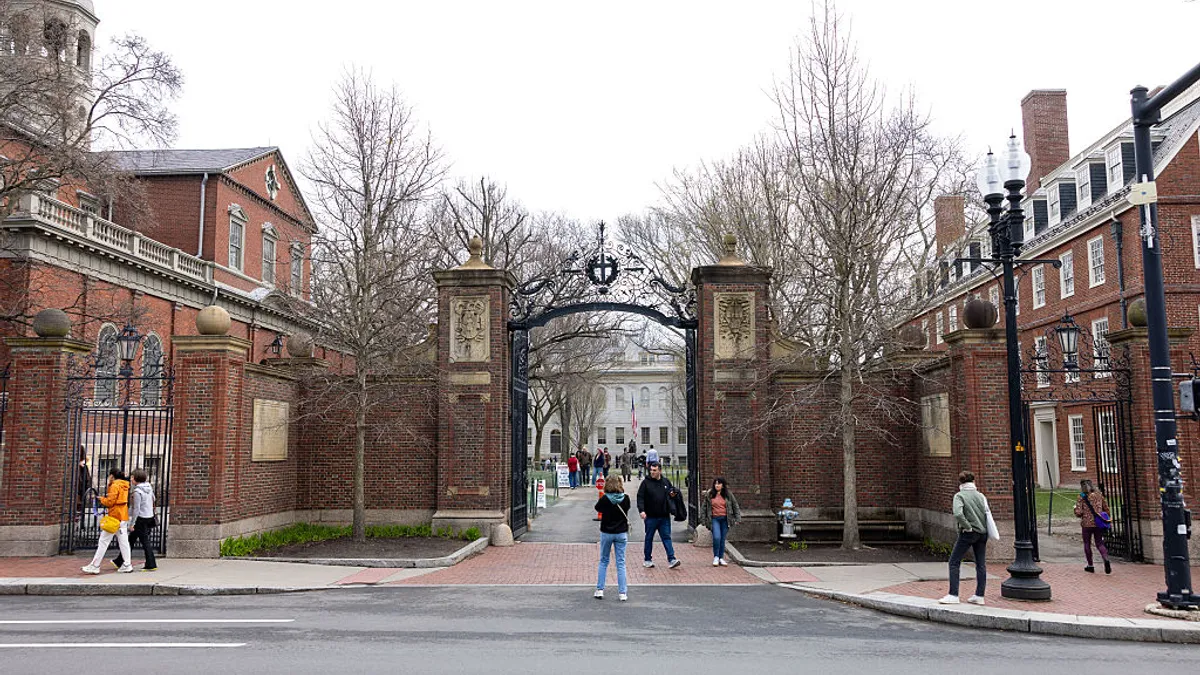Nearly all public colleges and universities can expect big budget cuts in the coming year, but officials in different states are taking vastly different approaches for determining how big those reductions will be and what they will mean for faculty, staff and students.
Ohio Gov. Mike DeWine, a Republican, ordered $110 million in cuts to higher education spending for the final two months of the current fiscal year, which ends June 30. He announced the cuts shortly after seeing the state's revenues drop during April. The actions would provide stability, DeWine said, though he acknowledged he was "greatly concerned" about those targeting education.
"We have an obligation to our schools to give them as much predictability as we can," he said, "but if we don't make these cuts now, future cuts would be more dramatic."
In Colorado, executive action could significantly lessen the impact of massive cuts proposed by lawmakers. A budget-writing committee approved a plan in mid-May calling for cuts of $493 million from the state's higher education budget next year, which could amount to a 58% reduction. Gov. Jared Polis, a Democrat, wants to offset that loss with an infusion of $450 million the state is receiving from the federal government, as part of an economic rescue package. The full legislature reconvened this week to try to pass a final budget.
Missouri legislators passed a spending plan that calls for reductions to higher education — unless Congress passes additional financial assistance to states. But Gov. Mike Parson, a Republican, has said more cuts may be coming.
"The governor has not given any specifics on what he's doing, but he used words like 'significant' and 'bad'" to describe them, said Paul Wagner, the executive director of the Council on Public Higher Education, which represents Missouri's 13 public four-year universities.
In neighboring Illinois, lawmakers largely avoided making higher ed cuts in the budget they sent to the governor last week. They hope more federal support would make those moves unnecessary.
"Illinois colleges and universities are exploring ways to be more efficient while preserving the high level of education available across the state," said Ginger Ostro, the executive director of the Illinois Board of Higher Education, in an email.
Throughout the country, state lawmakers are trying to find a way forward at a time when much of the information they typically rely on isn't available.
"Legislators are operating in an environment where the revenue forecasts are uncertain (and) the aid from the federal level is uncertain," said Andrew Smalley, a research analyst with the National Conference of State Legislatures. On top of that, he added, several governors have tried to control federal funds without consulting legislators.
Many of the budget-cutting decisions are falling to governors, executive agencies or higher education institutions themselves. In 16 states, lawmakers passed two-year budgets last spring, so they won't necessarily have a chance to weigh in on next year's spending.
"States are facing deep declines in revenue and, absent another federal stimulus package, most are going to make deep cuts to their programs and services, including higher education," said Thomas Harnisch, the vice president for government relations at the State Higher Education Executive Officers Association (SHEEO).
More funding needed
In late March, Congress passed a sweeping economic rescue package that included nearly $14 billion for colleges and universities. Known as the Coronavirus Aid, Relief and Economic Security (CARES) Act, it also included $150 billion for states, localities and tribal governments. Many states have used some of those relief funds to shore up higher ed programs.
Harnisch said more federal relief is needed. "The CARES Act is an important measure to help states deal with the immediate effects of the coronavirus emergency. But the intermediate- and longer-term issues posed by the pandemic will require another stimulus package from the federal government," he said.
States are seeing big drops in revenues from income and sales taxes — their main funding sources — because of rapidly rising unemployment and the slowdown in commerce due to business closures and stay-at-home orders. The Center on Budget and Policy Priorities (CBPP), a left-leaning think tank, estimates that state budget shortfalls will reach about 15% in the current fiscal year, even though the coronavirus affected the economy for only the last third of that period, which in most states ends on June 30. Next year, shortfalls could be more than 25%, CBPP estimates.
Unlike the federal government, states must balance their budgets, and higher education is usually among the first areas they look to for cuts, Harnisch said. "Higher education is a discretionary budget item in state budgets, meaning that states do not have to fund it at a minimum level," he explained. The sector also has alternative revenue streams, including tuition and fees and auxiliary income.
But this year's cuts will come on top of those made in the wake of the Great Recession, which many states never restored.
"States are facing deep declines in revenue and, absent another federal stimulus package, most are going to make deep cuts to their programs and services, including higher education."

Thomas Harnisch
Vice president for government relations, State Higher Education Executive Officers Association
Although state funding for higher education has increased per full-time student in each of the previous seven years, states have only recovered two-thirds of the support lost during the last recession, according to a recent SHEEO report. The average public institution receives less state funding per student than in almost every year prior to the recession, going back to 1980.
Only seven states have completely made up the lost ground from the recession, while seven states had higher education appropriations 30% or more below their pre-recession levels, the group said.
What's more, colleges are now losing out on auxiliary revenue, in some cases having to refund room and board fees to students who had to leave campus because of the virus. And several institutions face lawsuits to return tuition because of the shift to online instruction.
More states will likely push through cuts in the coming weeks, as legislatures wrap up their annual sessions and lawmakers prepare their budgets for the new fiscal year.
Here are some of the most significant actions taken so far.
$2B in cuts for California
Gov. Gavin Newsom, a Democrat, released a budget proposal earlier this month calling for a 10% reduction in higher ed spending, which would amount to a $2 billion cut, CalMatters reported. But Newsom pointedly left most of the state-supported financial aid programs untouched.
"We're not going to touch the Cal Grant program," the governor told reporters.
Georgia colleges waiting on lawmakers
Public colleges, like other state agencies, are preparing for funding cuts of 14% directed by Gov. Brian Kemp, a Republican. That could leave 1,400 staff vacancies unfilled and another 700 workers out of a job through buyouts or layoffs at the University System of Georgia, The Associated Press reported. Legislators will gather in June to pass a final budget.
Until that plan is adopted and approved, the 26-university system "will be faced with some uncertainty," wrote its chancellor, Steve Wrigley, in early May.
Scenario planning in Nevada
At the governor's request, the Nevada System of Higher Education's (NSHE) Board of Regents prepared three spending reduction plans for next year. They outline how the state's public universities would handle cuts of 6%, 10% and 14% next year. Each measure would use $60 million of federal relief funds, stop new hiring and impose temporary per-credit student fees. Under the most extreme measure, academic and administrative faculty would have a 4.6% reduction in pay or 12 furlough days.
Oklahoma's higher ed funding stays flat
State lawmakers passed a budget that did not lower higher ed spending once federal relief funds were factored in. "The Legislature kept its promise and protected education. We are not letting a virus roll back the historic investments Oklahoma has made in education the past few years," said Senate Appropriations Chairman Roger Thompson, a Republican, in a statement.
Gov. Kevin Stitt, also a Republican, vetoed the legislature's budget bills, but lawmakers promptly overrode those vetoes.
Batting back deep cuts in Wyoming
Legislators rejected a last-minute proposal that would have allowed Republican Gov. Mark Gordon to cut a quarter of the University of Wyoming's state funding to shore up other parts of the state budget. But the measure, or other reductions, could come up again when lawmakers reconvene in late June for a special session, the Casper Star-Tribune reported.




















